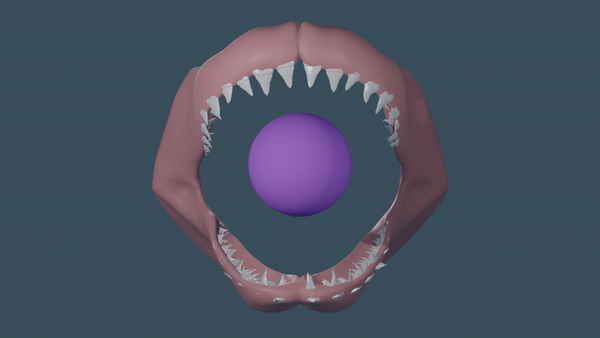
EDUCATION

OUTREACH
JAWS AND TEETH
The jaws of a shark are not attached to the skull; they move as separate parts. The upper and lower jaw work independently. This versatility provides the shark with a very powerful pull and latch.

SHARK JAW BITE
Courtesy CSULB Shark LAb
The teeth are arranged in rows, just as tooth shape differs between species, so does the number of rows a shark has. The bull shark has about 12 or 13 rows of teeth, whilst the basking shark has more than 200 in each jaw! When one tooth is damaged or lost, it is replaced by another. As a front tooth is broken or worn down, it falls out and is replaced by a tooth in the next row. The sets of teeth rotate forward and a new tooth forms in the rear. If teeth become broken, dull or even lost, their ability to catch their prey and eat it might be impacted. To prevent this from becoming a major issue, they always have new teeth developing as long as they are alive.
Tooth loss and regrowth
Courtesy of CSULB Shark LAB
C
Lined with multiple rows of shark teeth, the jaws of a shark are perfect for biting, chomping and slicing its way through its prey. Sharks teeth come in all different sizes and you can tell what type of prey it eats just by the shape of its teeth. For example, the triangular, serrated teeth of the great white shark are perfect cutting tools for biting large chunks of flesh from a blubbery marine mammal, whilst many bottom dwelling sharks have thick conical or flattened teeth in the back of their mouths that are used for crushing crabs and mollusks, for example the nurse shark and angel shark.

SHARK SPECIES


PREY ITEMS
SHARK jaws
SHARK TEETH
Download poster & Answer key




